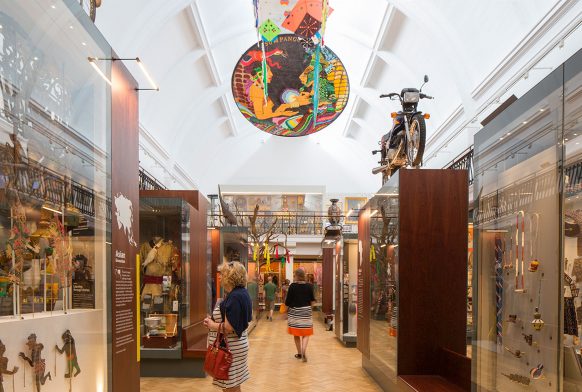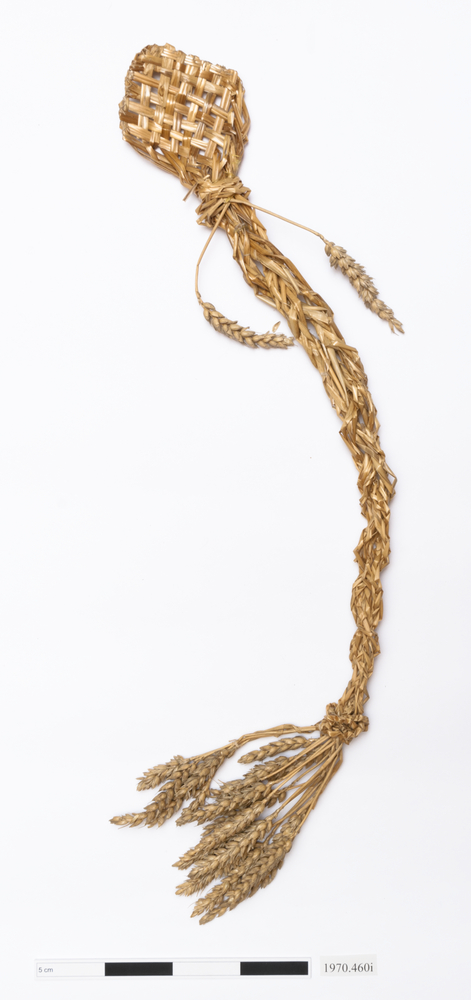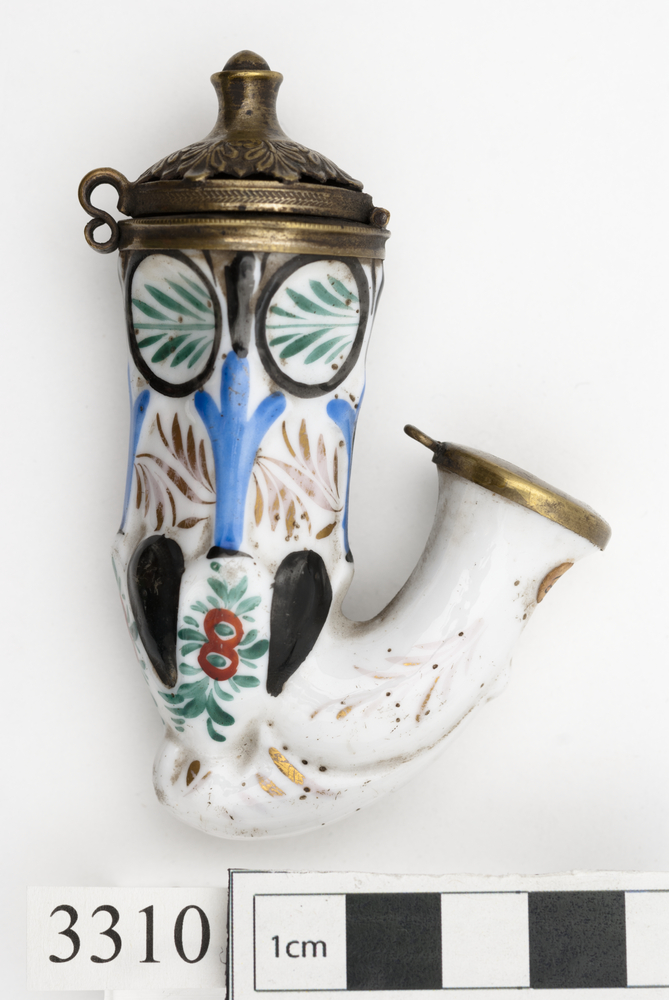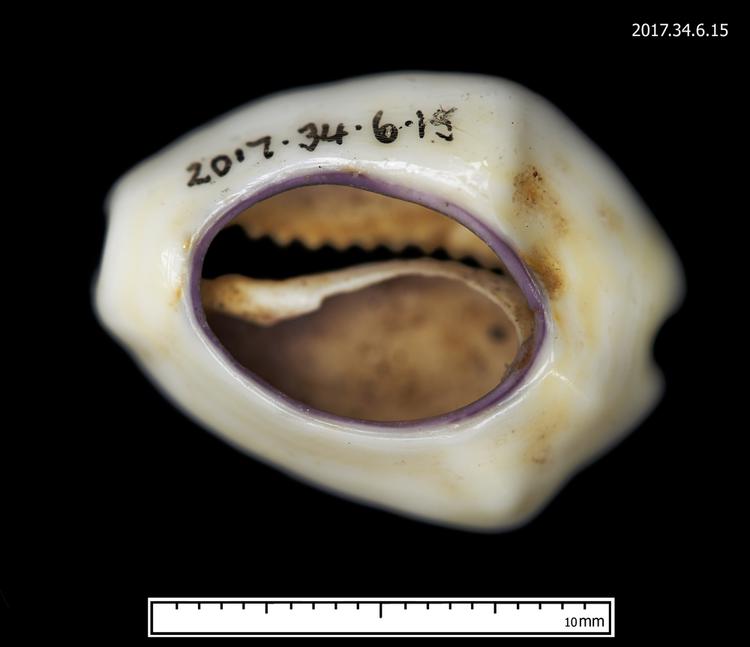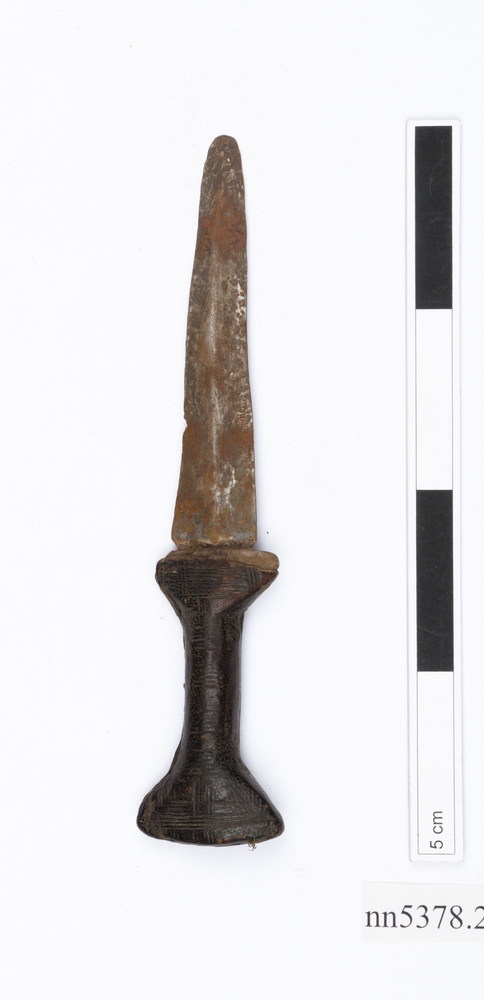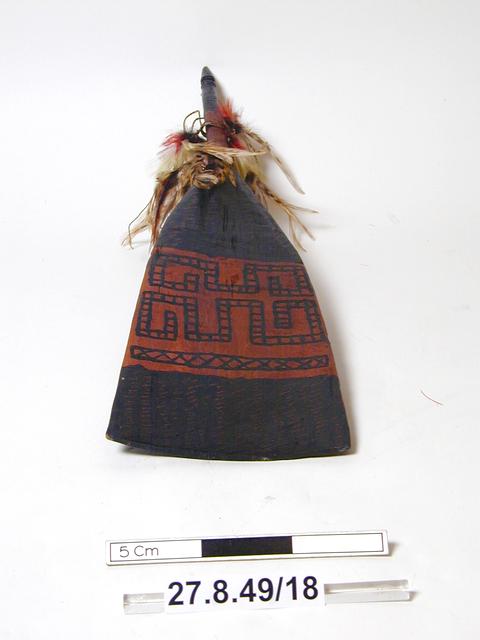
A dance club. This club is decorated with the anaconda skin pattern, which is a major recurring pattern among various Amerindian groups. The pattern is depicted in a curled position to mimic the snake's form. The little crosses or zigzag patterns resemble those found on vanity baskets, perhaps showing the head and tails of a fish. The top and bottom parts of the club are painted black using the black paint that is also used for body decorations. Using their fingernails or sharp instruments, the wet paint is decorated with zigzag patterns. These patterns depict movements, especially of water in a place where that resource is in abundance. The mixed feathers attached to the club are for symbolic and aesthetic, or beauty, purposes.
A dance club. The club is made of lightwood and decorated with motifs that are also found on other objects such as pots, baskets and beadwork. The dance clubs are part of an assortment of objects that include instruments used in festivals, and men who are adorned in costume with feathers and other decorative patterns carry them. Most of the dances, such the Jaguar dances, had animal themes. Most of the animals depicted are of economic, social or ritual significance to the people. Special dances were also performed in ceremonies such as Shodewika of the Wai Wai, Parishara ("Humming bird") of the Wapishana, Makushi and Patamona. This club is decorated with the anaconda skin pattern, which is a major recurring pattern among various Amerindian groups. The pattern is depicted in a curled position to mimic the snake's form. The little crosses or zigzag patterns resemble those found on vanity baskets, perhaps showing the head and tails of a fish. The top and bottom parts of the club are painted black using the black paint that is also used for body decorations. Using their fingernails or sharp instruments, the wet paint is decorated with zigzag patterns. These patterns depict movements, especially of water in a place where that resource is in abundance. The mixed feathers attached to the club are for symbolic and aesthetic, or beauty, purposes.



